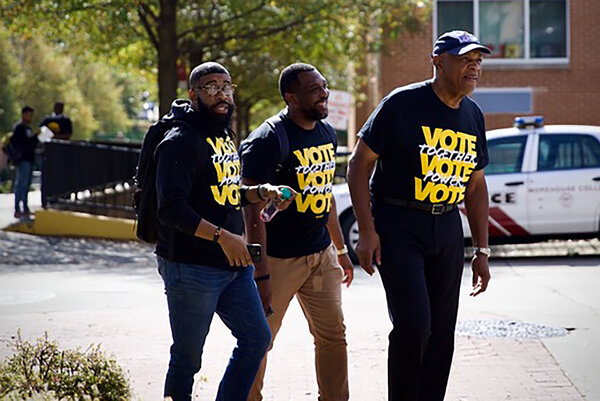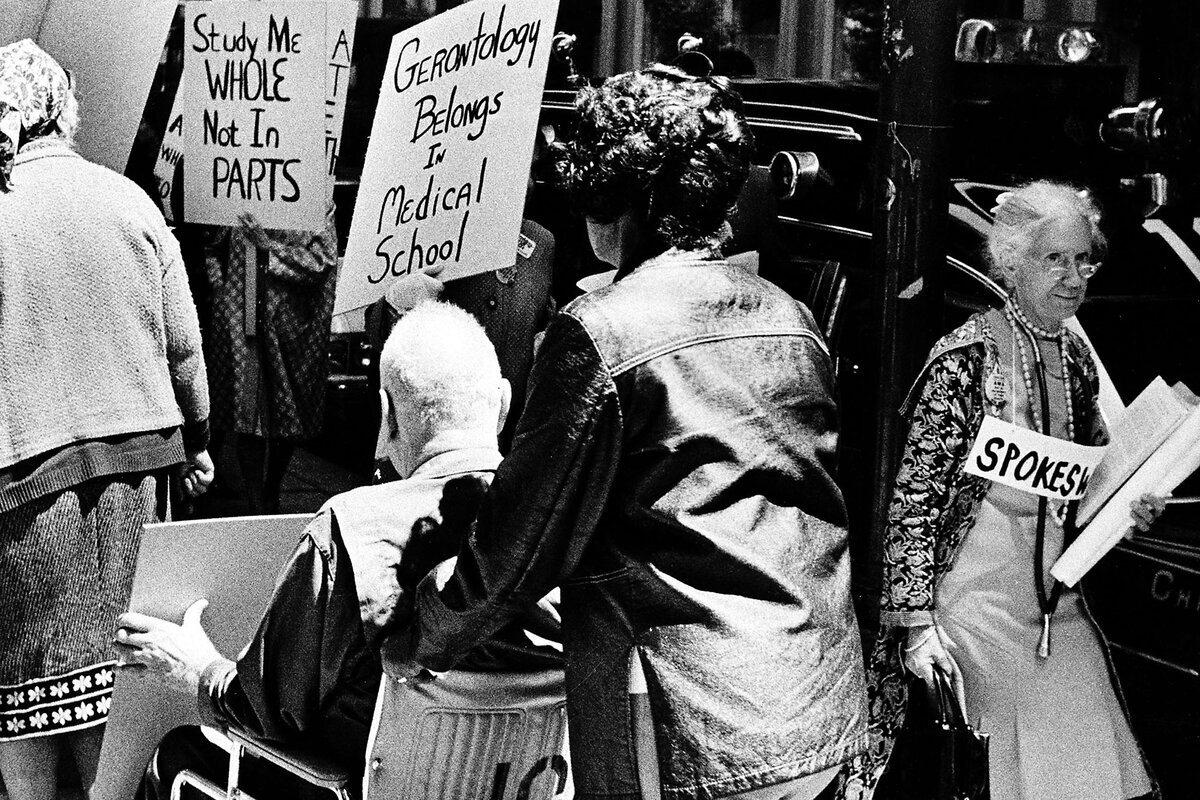65 years ago, sit-ins were born. Has their time come again?
Loading...
This February marks the 65th anniversary of the sit-in movement, which started in Greensboro, North Carolina. Four students from a historically Black university, North Carolina A&T, sat at a Woolworth’s counter and did not move until the store closed.
The act of sitting at segregated lunch counters was rightfully seen as radical at that time – a form of civil disobedience that not only empowered the Civil Rights Movement, but was the start of a diverse array of protests that would yield messages such as “Black Power.”
Years later, the founders of the Student Nonviolent Coordinating Committee, now organized under the SNCC Legacy Project (SLP), find themselves countering another era, one that they believe mirrors those of the recent past.
Why We Wrote This
This Black History Month, our commentator interviews a civil rights leader about his past with the sit-in movement and what lessons can be learned for today.
If “time is not a circle,” as the saying has it, history is still cyclical in nature. And, members of the SNCC say, it might be time for activists to return to the metaphorical counter and not be moved.
“We are alarmed. Perhaps we are the best qualified to be alarmed. We organized and fought for civil rights in some of the most violently dangerous areas of the Black Belt South. Yet we live today in more dangerous times than we imagined our future would be 60-some-odd years ago,” members of SLP wrote in a statement. “Our own experiences as civil rights movement veterans leave us without illusions about the capacity of tyranny to take root. Today we see a national government taking shape that is reminiscent of the white supremacist Citizens Councils in Mississippi and throughout the South. And we remember that their viciousness was not only directed at civil rights activists and organizers, but at all people who criticized or stood in dissent of their practices and programs.”
Courtland Cox is the chairman of SLP’s board of directors. But recognizing him only in that capacity does him a great disservice. He is an organizer and activist linked with the sit-in movement, the Freedom Rides, and the 1963 March on Washington. Time magazine profiled Mr. Cox in September and said that his activism started as a 19-year-old student at Howard University. But anyone born in the civil rights struggle knows that protest is a part of one’s DNA.
“Our fathers and our mothers got us to the 1954 [Brown v. Board of Education] Supreme Court decision of ‘all deliberate speed,’ but those of us in college said that wasn’t enough. We’re going to work to change America,” Mr. Cox said in a phone interview. “Over a 10- to 15-year period, I would say from sit-ins to Black Power, we changed the dynamic of America.
“Today is a direct result of what people tried to do in 1960, and what we did in 1960 was a direct result of the veterans who came back from World War II,” he adds, speaking about the Black GIs who faced violence and segregation at home after the war.
Much like other civil rights campaigns, SNCC wasn’t just a triumph for Black people. Among other campaigns, Mr. Cox spoke with me about “Gray Power,” which included the birth of the Gray Panthers. The group was founded by Philadelphian Maggie Kuhn in 1970 to combat ageism. He calls the era the “most liberating period in America” for marginalized groups such as women and senior citizens.
It is fitting that Mr. Cox would speak about the legacy of senior leadership. Now 84, it is he who is tirelessly working to organize the next generation.
“We are working with young people who were engaged after the Trayvon [Martin] murder in 2012,” he said. “We are joining with them to create a digital place where anyone can see what has happened, whether it’s us, Dr. King, CORE, BYP100, or the Dream Defenders.”
With attacks on Black history in public schools and institutions, SLP hosted a “Freedom School” course ahead of the 2024 presidential election, including lessons on political power and “The Meaning of the Right To Vote in Freedom Summer.” Further, part of SLP’s work is also creating curricula that will tell our stories well into the future.
“We’re not just making this up from books. These are the lived experiences of people over 75 years, and how do we now begin to talk about it and make sure that’s the public record,” Mr. Cox says. "We’re gonna try to do those specific things to influence the next generation, both in terms of the community and the institution, so that whatever happens lives on past me.”








